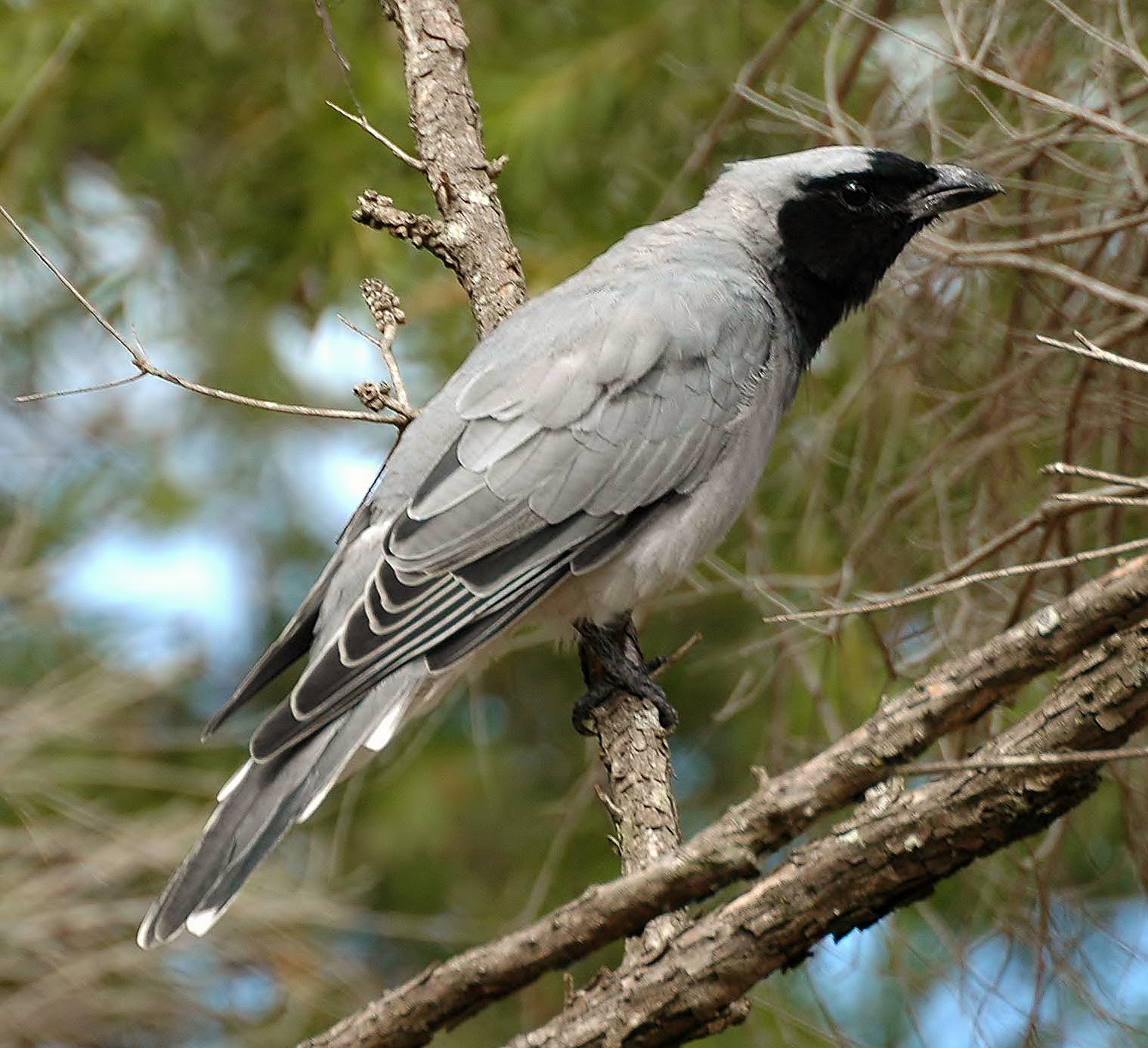 |
| Photo by Tom Tarrant (Wikipedia) |
Common name:
black-faced cuckoo-shrike (en); lagarteiro-de-face-preta (pt); échenilleur à masque noir (fr); oruguero de cara negra (es); schwarzgesicht-raupenfänger (de)
Taxonomy:
Order Passeriformes
Family Campephagidae
Range:
This species is found throughout mainland Australia and Tasmania, with some populations migrating north to winter in Papua-New Guinea and Indonesia.
Size:
These birds are 32-35 cm long and weigh 90-150 g.
Habitat:
The black-faced cuckoo-shrike is found in a wide range of wooded habitats, including dry savannas, dry tropical forests, moist tropical forests and mangroves, and also in agricultural and urban areas.
Diet:
They can forage on the ground, on the foliage or in flight, taking a wide variety of invertebrates, such as grasshoppers, dragonflies, spiders and worms, as well as seeds and fruits, including mistletoe, figs and berries.
Breeding:
Black-faced cuckoo-shrikes can breed all year round, varying between different parts of their range. The nest is built by both sexes, consisting of a small, neat, shallow cup, made of twigs, rootlets, bark fibre and Casuarina leaves, bound together with spider webs. It is placed on an horizontal fork of a tree, usually 8-20 m above the ground. The female lays 2-3 creamy-brown eggs with darker brown speckles, which are incubated by both parents for 21-22 days. The chicks are raised by both parents and fledge 21-26 days after hatching.
Conservation:
IUCN status – LC (Least Concern)
This species has a very large breeding range and is reported to be locally common. This population is suspected to be in decline owing to habitat destruction, but it is not considered threatened at present.







